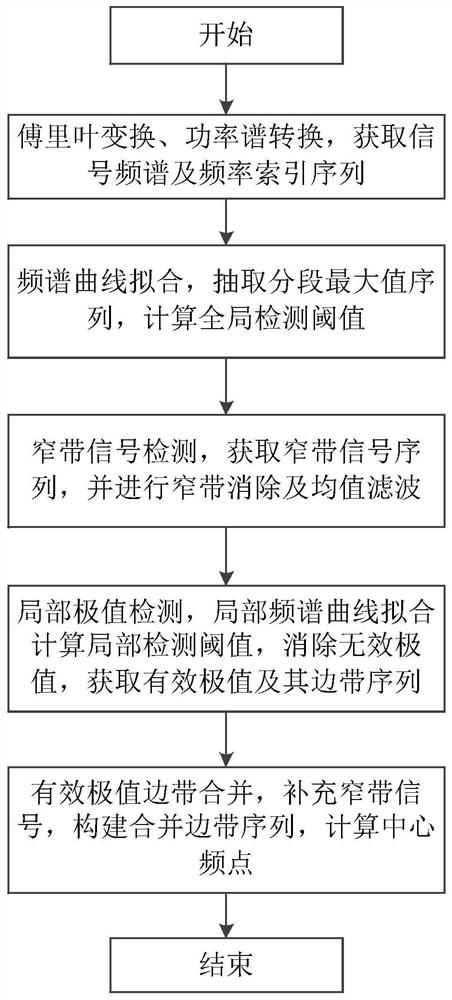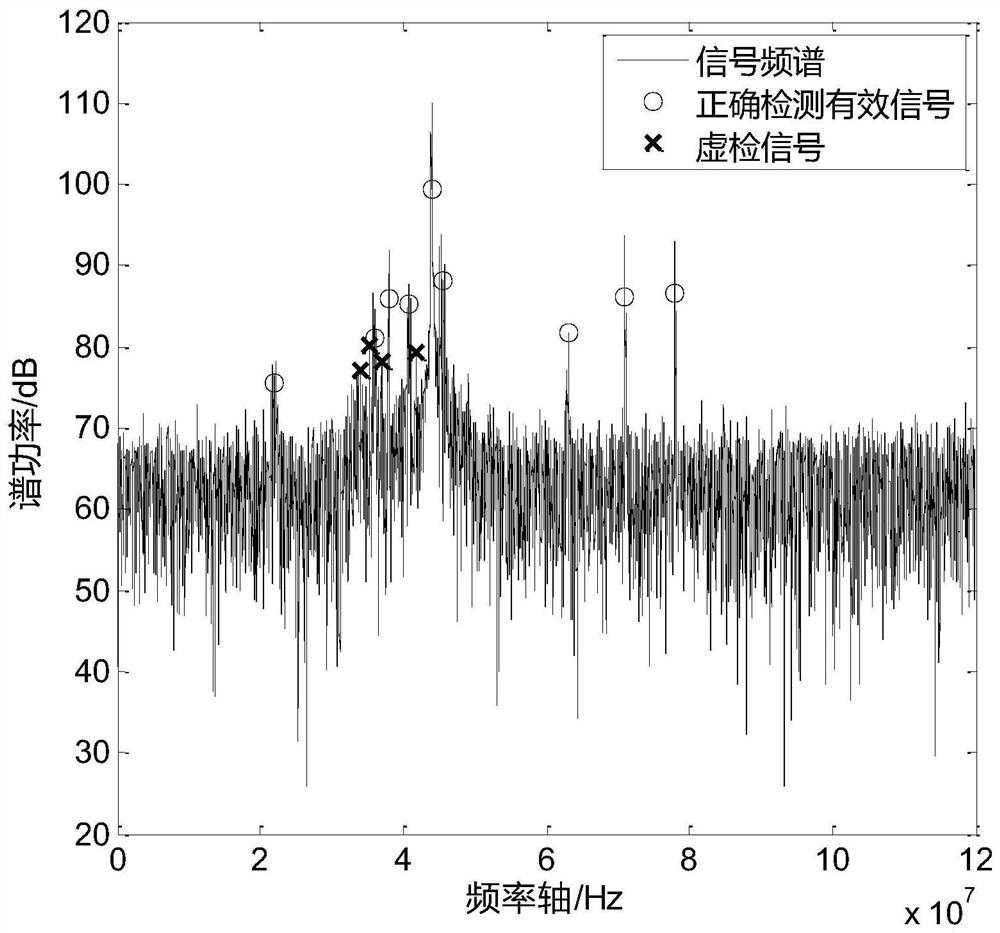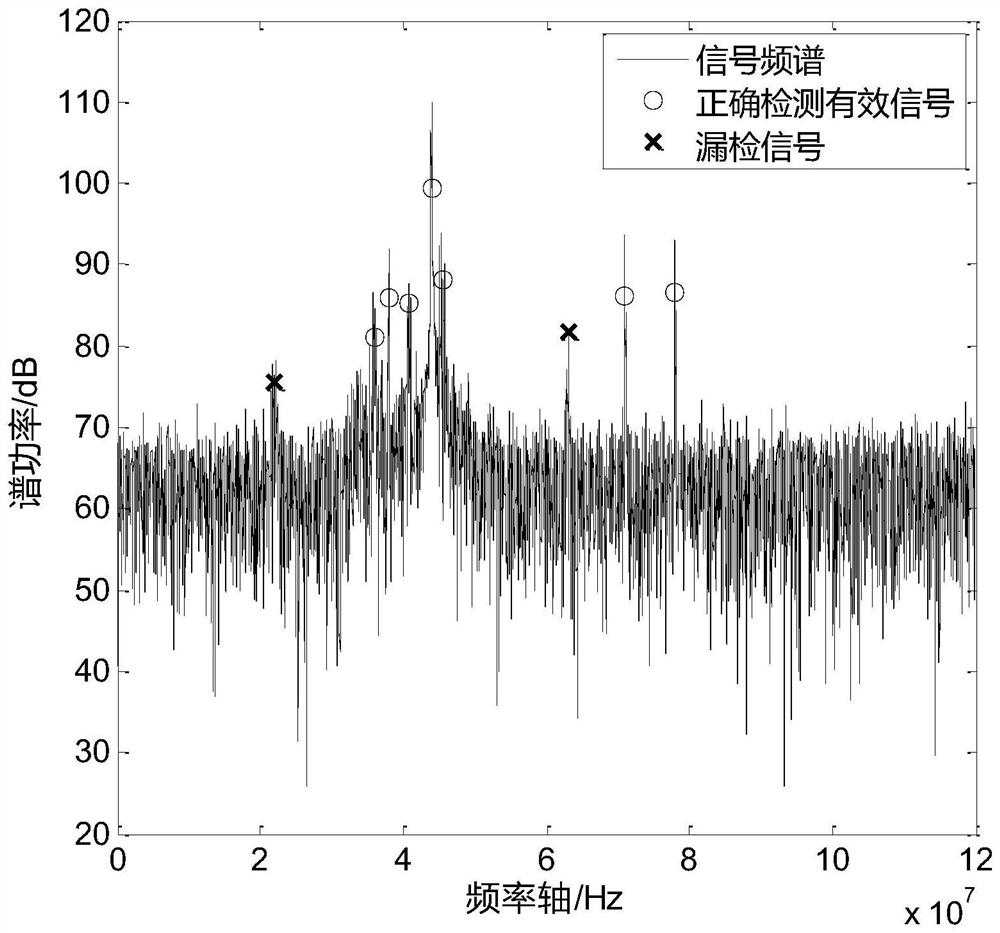Non-cooperative signal detection method based on frequency spectrum
A signal detection, non-cooperative technology, applied in the direction of transmission monitoring, digital transmission systems, electrical components, etc., can solve the problems of lack of multi-signal recognition and detection capabilities, increased processing delay, and inability to effectively cope with signal detection tasks, etc., to achieve improvement Signal detection misjudgment problem, improve accuracy, improve the effect of false alarm and missed detection problem
- Summary
- Abstract
- Description
- Claims
- Application Information
AI Technical Summary
Problems solved by technology
Method used
Image
Examples
Embodiment Construction
[0046] The present invention will be further described below in conjunction with the accompanying drawings and embodiments.
[0047] The present invention first performs Fourier transform on the signal received by the receiver, and performs global threshold value estimation, narrowband signal detection, narrowband signal elimination, mean value filtering, local extremum extraction, local threshold value estimation, and local threshold value estimation on the transformed frequency domain data respectively. Extremum validity judgment, extremum point merging, narrowband signal merging, etc. are processed to finally obtain the effective signal sequence contained in the intercepted signal. Its specific implementation steps are as follows:
[0048] Step 1, the signal x detected by the receiver t Perform Fourier transform and convert to power spectrum to get original spectrum data and the frequency index sequence f x (i)=i×(f s / N FFT ), i=0,1,2,···,N FFT -1, f s is the sampl...
PUM
 Login to View More
Login to View More Abstract
Description
Claims
Application Information
 Login to View More
Login to View More - R&D
- Intellectual Property
- Life Sciences
- Materials
- Tech Scout
- Unparalleled Data Quality
- Higher Quality Content
- 60% Fewer Hallucinations
Browse by: Latest US Patents, China's latest patents, Technical Efficacy Thesaurus, Application Domain, Technology Topic, Popular Technical Reports.
© 2025 PatSnap. All rights reserved.Legal|Privacy policy|Modern Slavery Act Transparency Statement|Sitemap|About US| Contact US: help@patsnap.com



